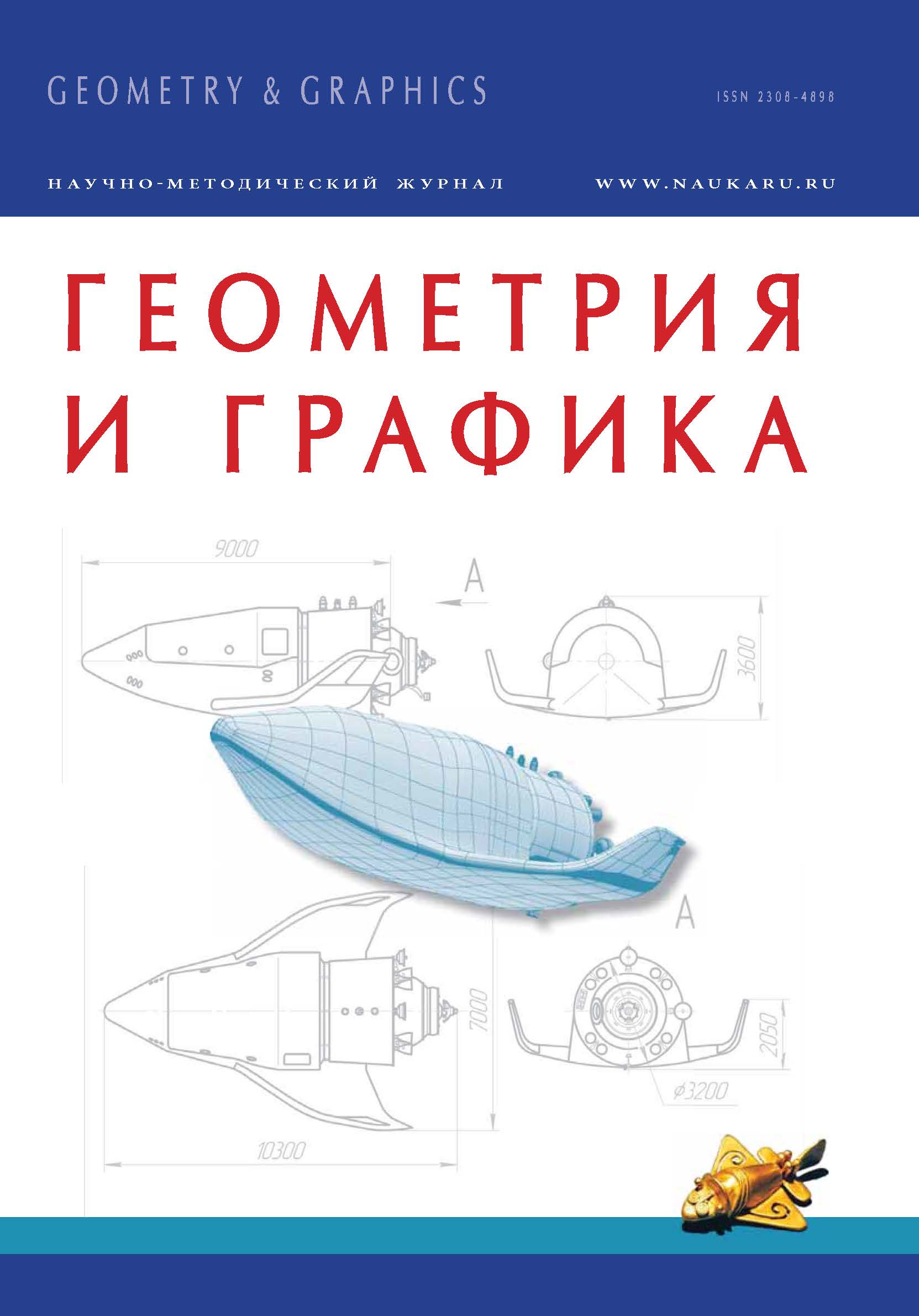Geodesic lines find interesting applications when solving many tasks of fundamental sciences (mathematicians, physics, etc.) and engineering practice. In differential geometry geodesic lines are characteristic lines for determination of internal properties of surface. However, the construction of geodesic line on a surface presents certain complications, mainly solved by the methods of calculating mathematics and descriptive geometry. In this article the development of a simple and comfortable algorithm of construction of geodesic line is considered on linear surfaces. In general case, the spatial model of algorithm of construction of geodesic line on a ruled surface is expressed in the following: a ruled surface we replace with averged surface, and at any side of the viewed verge, the intersection point of the geodesic with the rib of fracture (line of bending of dihedral angle) will be determined as the intersection of contiguous generatrix with the surface of cone of rotation – the congruence of directions of geodesic laying with the top at initial point, axis of rotation, incident to the considered generatrix, and the corner at the top of cone, equal to the doubled corner between the axis of rotation and direction of the geodesic laying. Next, as an initial parameters the contiguous with reviewed generatrix are accepted, determined higher point, lying on it, and the direction of geodesic is a corner between a segment obtained from geodesic and contiguous generatrix. Thus, repeatedly reiterating the described cycle, we will get the multitude number of points, making the required geodesic line.
descriptive geometry, ruled surface, generatrix, direction of laying, congruence direction, geodesic line, intersection.
1. Busemann H. Geodesic geometry. Moscow, Publishing House. Physics-math. Literatury Publ., 1962. 503 p. (in Russian)
2. Vanin V.V. Geometric modeling and scans not unrolled cloth covered surfaces. Cand. Diss. Kiev, 1971. (in Russian)
3. Vinogradov A.V. Preparation of the intermediate points of the geodesic lines on the ellipsoid. GEO-Siberia-2001: Proceedings of III International. scientific. Congress. Novosibirsk, 2007. Novosibirsk, Publishing House of the SSGA, 2007. V. 1, Part 2, pp.144-148. (in Russian)
4. Wygodsky M.J. Differential geometry. Moscow, Leningrad, Gostekhizdat Publ., 1949. 511 p. (in Russain)
5. Hilbert D., Cohn-Fossen S. Visual geometry. Moscow, Nauka Publ., 1981. 384 p. (in Russian)
6. Glagolev N.A. The problem of the shortest line in the projections with numerical marks. Mathematical collection of the Moscow Mathematical Society, V. XXXI. Moscow, 1923. (in Russian)
7. Ivanov G.S. Constructioning of technical surfaces. Moscow, Engineering Publ., 1987. 230 p. (in Russian)
8. Ivanova L.S. Modeling rational forms of fabric, mesh and coating combined numerical methods. Cand. Diss., Kiev, 1987. (in Russian)
9. Kovalev S.N., Kharchenko A.I. A numerical method forthe construction of a geodesic on a regular surface. In the book. Applied Geometry and Engineering Graphics. Kiev Budivelnik, 1978, I. 26, pp. 24-25. (in Russian)
10. Pavlenko G.E. Basics of designing the geometry of the ship. Moscow, Rechizdat Publ., 1948. (in Russian)
11. Ryzhov N. On the construction of the shortest line on a topographic surface. Proceedings of the Moscow seminar on descriptive geometry. Sov. nauka Publ., 1958. (in Russian)
12. Stepanov S.E. Geodesic line. Soros Educational Journal, 2000, V. 6, I. 8, pp. 115-120. (in Russian)
13. Elkin L.M. Network design special technical surfaces for the automated preparation of management information playback. Cand. Diss., Rostov-on-Don, 1985, 1987. (in Russian)
14. Shearman Y.D. Theoretical basis of radar. Moscow, Soviet Radio Publ., 1970. 560 p. (in Russian)






